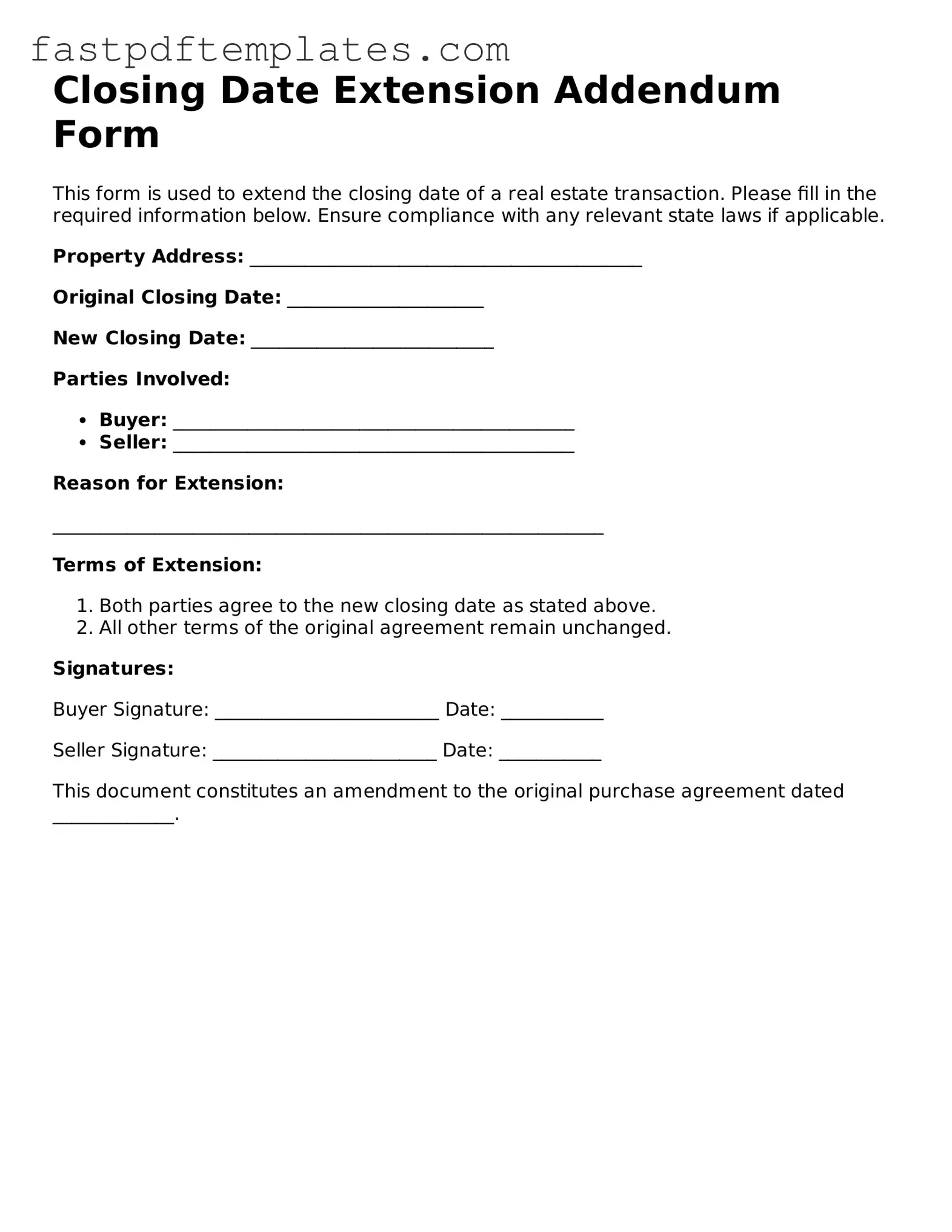Fillable Closing Date Extension Addendum Form Document
The Closing Date Extension Addendum Form is a legal document used in real estate transactions to extend the closing date of a property sale. This form provides both buyers and sellers with the flexibility to adjust timelines as needed, ensuring that all parties have adequate time to fulfill their obligations. Understanding how to properly utilize this form can help prevent misunderstandings and facilitate a smoother closing process.
Access Document
